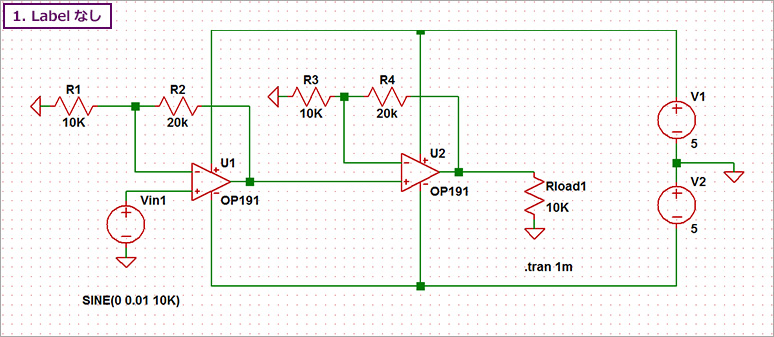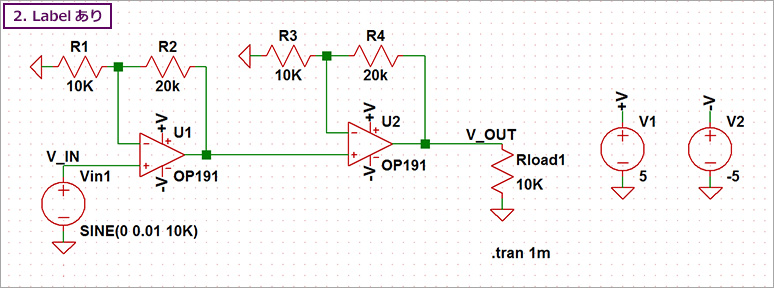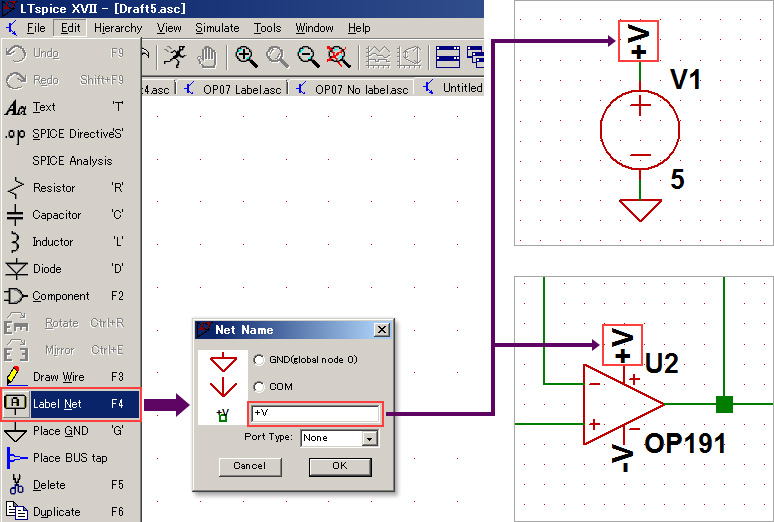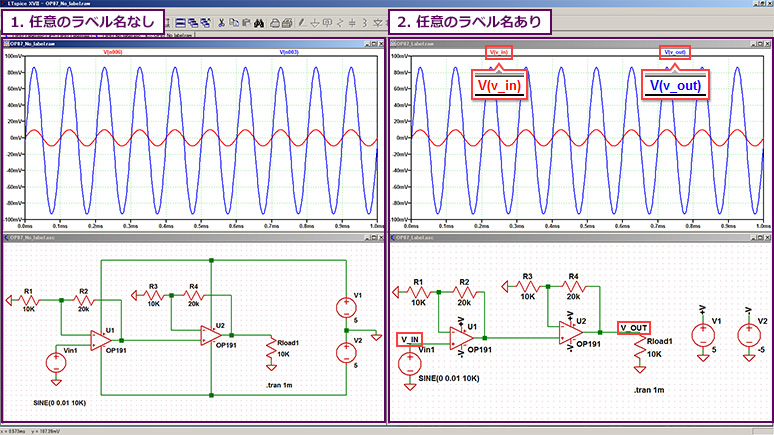This time, I will introduce how to use "Label Net" as a way to draw easy-to-read circuit diagrams.
If you are just starting LTspice, we recommend that you look at the "basics" from the list below.
Let's use LTspice series list is here
Also, if you would like to see a video on how to write a basic circuit and how to execute it, there is an on-demand seminar that does not require you to enter personal information, so please take a look if you are interested. Detailed information about the seminar is also provided to those who fill in the questionnaire.
LTspice On-Demand Seminar - Function check with RC circuit -
Which schematic is easier to see?
As soon as possible, I created two circuit diagrams of an amplifier using two op amps.
Which circuit diagram is easier to see?
Both have the same function, but the wiring in Fig. 1 is straightforward.

On the other hand, in Fig. 2, wiring was performed using Label Net.

In Figure 1, there are places where the power supply wiring and the signal wiring intersect.
On the other hand, Fig. 2 uses Label Net, so there are no wiring intersections.
For this reason, I think Figure 2 is easier to see.
How to use LabelNet
Select Label Net from the menu bar as shown in Fig. 3, give it an arbitrary name, and assign it to the wire (node). By assigning the same label name to the wiring, even if the wiring is far away, it is considered to be connected.
Therefore, using Label Net to separate the power supply and signal system makes it possible to draw an easy-to-read circuit diagram.

Name the measurement points with Label Net
Let's run a simulation of the two types of operational amplifier circuits that we have created.
The measurement points are the signal source V1 and the output terminal of the operational amplifier (U2).
Looking at the waveform results, in Figure 4-2, arbitrary names "V_IN" and "V_OUT" were assigned to the wiring using Label Net, so you can immediately see which terminal the waveform results are from.
Figure 4-1 shows the node names n006 and n003 inside SPICE. Even if you look at the name of the waveform, it will be difficult to know which pin it is.
Therefore, it is recommended to use "Label Net" for the measurement point and give it an arbitrary name.

LTspice demo file verified this time
After extracting the zip file to the same folder on a computer with LTspice installed, run LTspice to automatically start waveform display.
The amplifier circuit of the operational amplifier used this time
At the end
This time, we introduced how to create circuit diagrams using "Label Net" and check simulation waveform data.
First, download LTspice from the link below! Please try once.
Download LTspice here
We also hold regular LTspice seminars for beginners. You can learn the basic operation of LTspice, so please participate.
Click here for LTspice seminar information
Click here for recommended articles/materials
LTspice List of articles: Let's use LTspice series
LTspice FAQ: FAQ list
List of technical articles: technical articles
Manufacturer introduction page: Analog Devices, Inc.
LTspice seminar information
Inquiry
If you have any questions regarding this article, please contact us below.
Analog Devices Manufacturer Information Top
If you want to return to Analog Devices Manufacturer Information Top, please click the button below.
